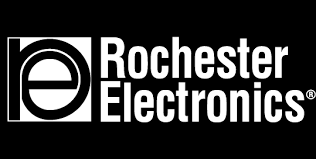Remembering Historic Memory Devices
A Memory Device, Innovation, and Revolution Retrospective
Since the onset of the electronics revolution, semiconductor memories have played an integral role. Broadly, memory can be grouped into two categories: Non-volatile memory, which retains content when power is removed, and volatile memory, which loses its content when power is removed. In this first entry of Rochester Electronics’ semiconductor memory series, we will look back on the origins of non-volatile memory.
The first non-volatile semiconductor solution was the PROM (Programmable Read-Only Memory), along with the closely related EPROM (Erasable PROM). The original PROM device was proposed at Bell Labs in 1967 and was further developed by Intel in 1971.
Initially, two types of EPROMs were available; a One-Time-Programmable version and a version that used ultra-violet (UV) light to erase memory content. The UV erasable version was particularly helpful in permitting design modifications during the prototype and development design phases.
The first practical and easily producible version available was a mere 256 bytes, amazingly small by today’s standards. Soon other well-known suppliers were selling their own devices, AMD, Intel, Fujitsu, Hitachi, Macronix, Atmel, and Texas Instruments.
Competing suppliers introduced advancements in memory densities, lower voltage operations, and additional package options.
One of the main challenges of EPROMs was the inconvenience of reprogramming using UV light, due to the need for specialized equipment. The problem was rectified with the development of EEPROMs (Electrically programmable EPROM), as reprogramming became faster, more reliable, and could be done on the board. This technology was originally fabricated by Solid State Devices in 1972, with further developments from a range of companies that included Hughes Aircraft, Fairchild, and Siemens. Continued improvements in memory resulted in higher densities, lower operating and programming voltages, and increased speed options. Another noteworthy change was the move away from parallel 8-bit interfaces to serial interfaces, such as I2C and SPI. This, along with the reduction in semiconductor geometries, allowed for migration to ever smaller packages.

Thirty years later, EPROMs and EEPROMs are still used in countless designs. Although the supplier landscape has changed, original component manufacturers such as Microchip (Atmel), onsemi (Catalyst), Renesas, Rohm, and ST Micro still provide production. Rochester Electronics provides inventory on active and obsolete EPROM devices, offering new production, on the classic AM27C256, AM27C512, and AM27C010 devices.
Are you looking for other EPROM Devices?
In the non-volatile memory space, competition came with the introduction of flash memory. Invented by Toshiba in 1980, Flash memory can electrically erase and reprogram memory, and pioneered the concept of in-circuit reprogramming. Now devices could be programmed, while assembled on the board, and became part of the manufacturing process. This allowed for changes to the memory device right up to the point of production. Prior to this, many devices were ordered pre- programmed from suppliers and distributors many weeks beforehand, which created issues anytime a change was needed. This improved production-line processing at a time when product lines were moving to increase automation and adding contract manufacturing services, allowing for greater production flexibility, and lowering costs.
After its introduction, Flash memory evolved into two different technologies. The original NOR flash technology could easily access all memory locations with a high degree of reliability, and the alternative NAND flash technology provided higher densities and lower costs, but at the expense of not allowing memory access to a single location and needing to manage memory cells.
Each technology offered unique benefits and market applications were developed for each. NOR Flash is ideal for storing code and critical data, while NAND Flash excels in high-capacity data storage to the point where it is now replacing hard disk drives in some applications. Some of the suppliers currently active in the Flash memory Market are Giga-Devices, Infineon, ISSI, and Macronix.
Rochester Electronics provides support for both active and obsolete Flash memory devices. Rochester and Infineon’s partnership provides ongoing support for the Cypress and Spansion families of NOR flash memories. As with all of Rochester’s products, all devices are 100% authorized, traceable, certified, and guaranteed.
Learn more about Rochester’s Infineon Flash Memory solutions
Learn more about Rochester’s memory solutions
Are you looking for other memory solutions?
Subscribe to Our Newsletter
Get the latest news, articles, and resources in your inbox weekly.
Manufacturers




